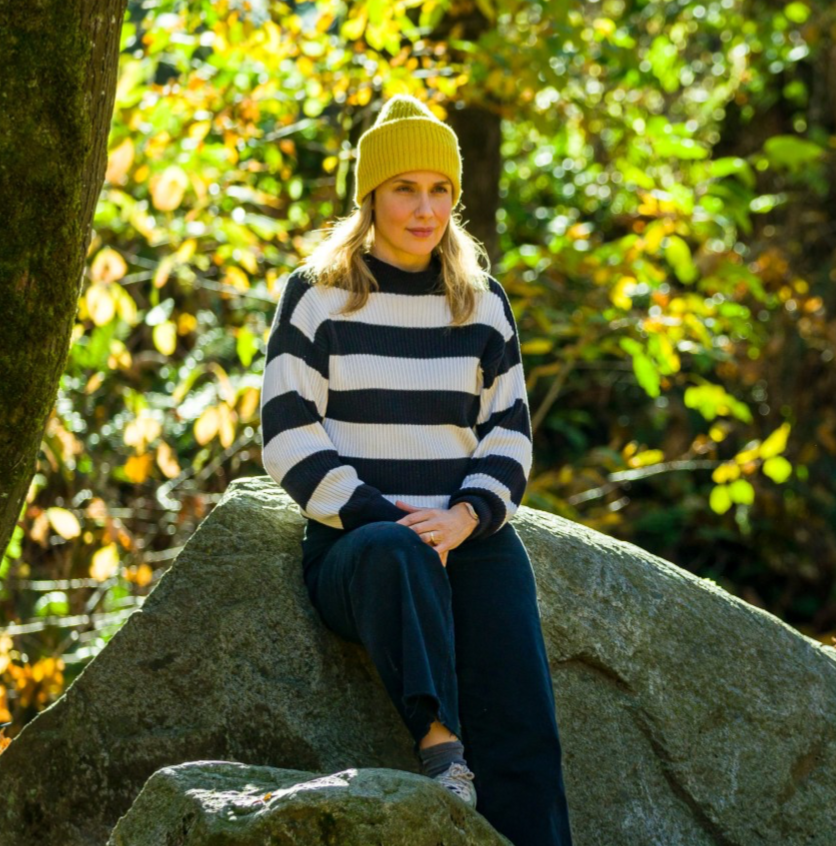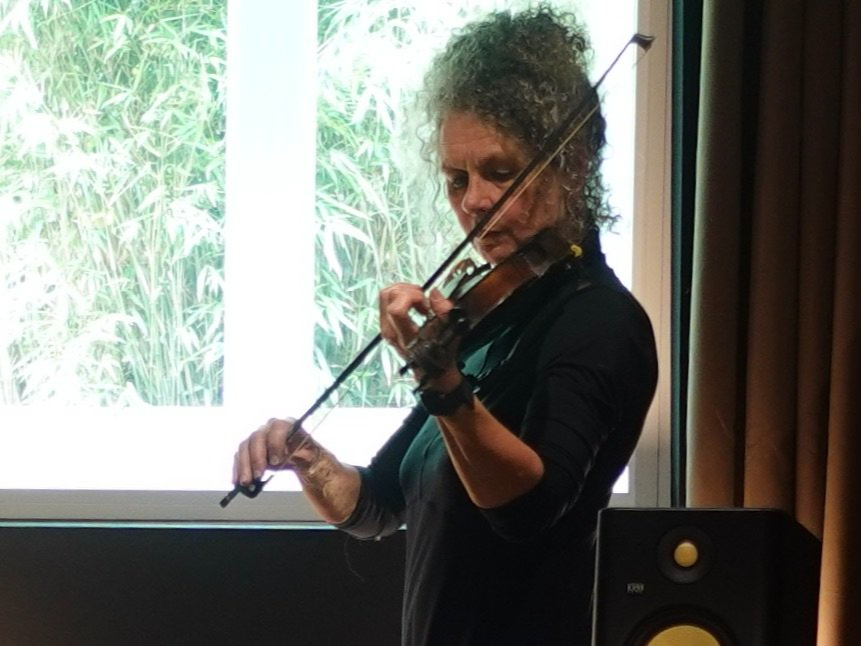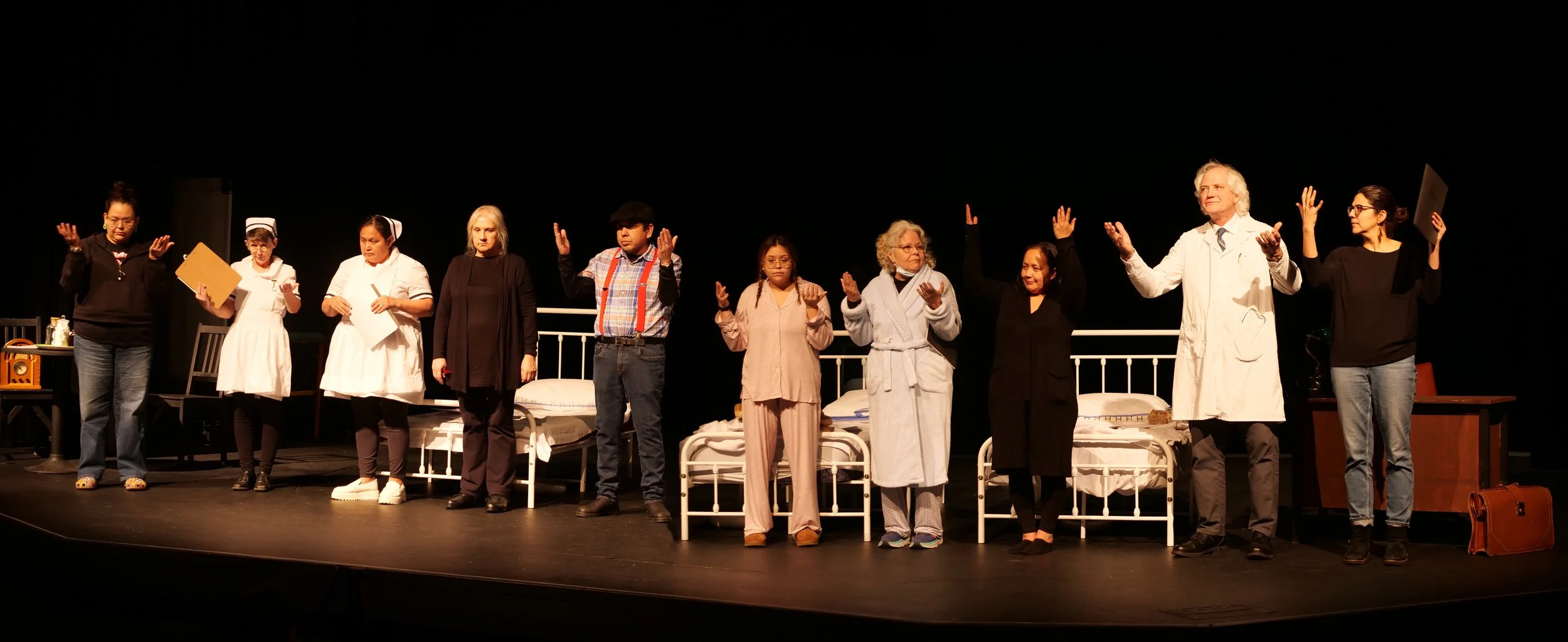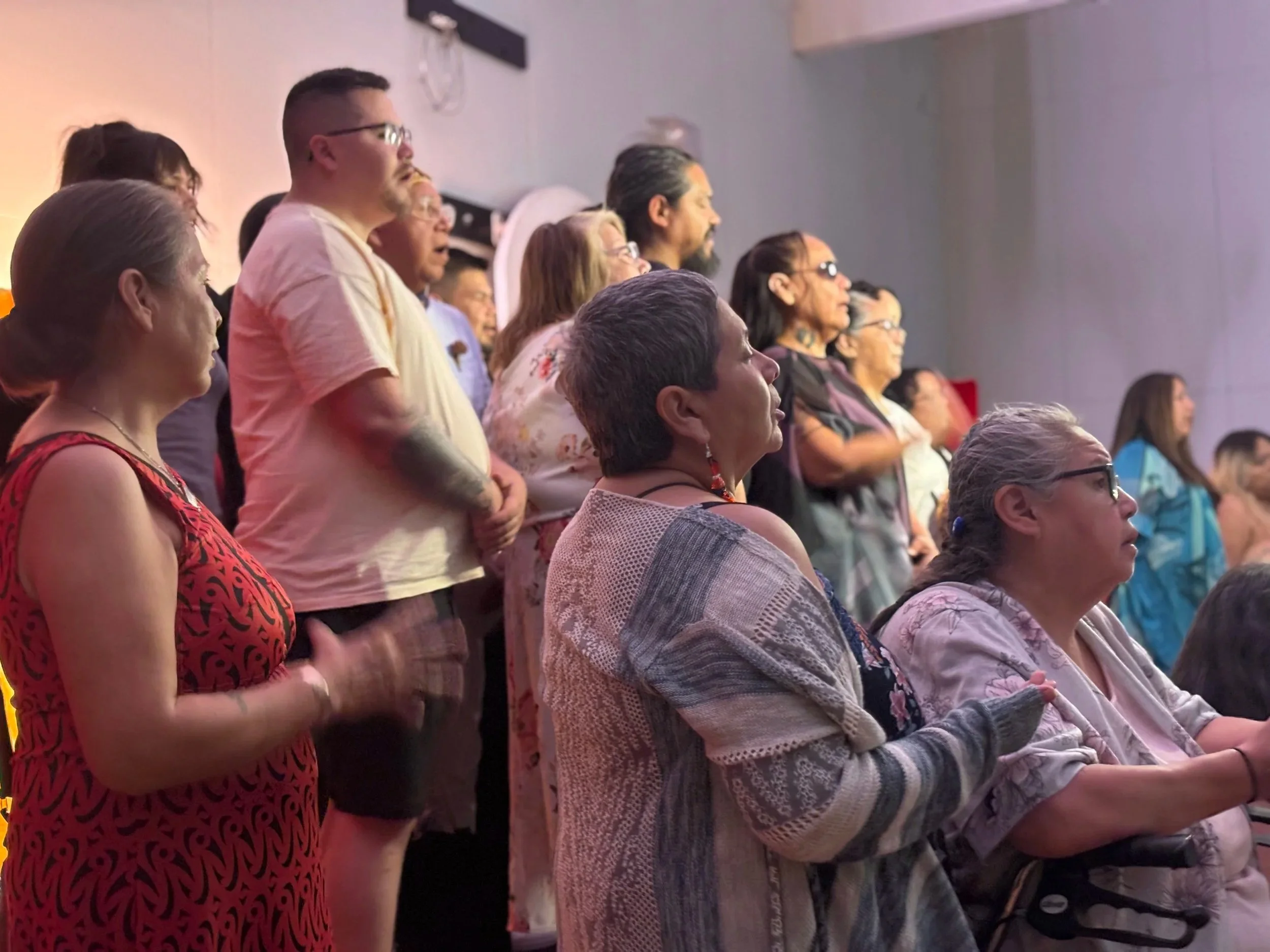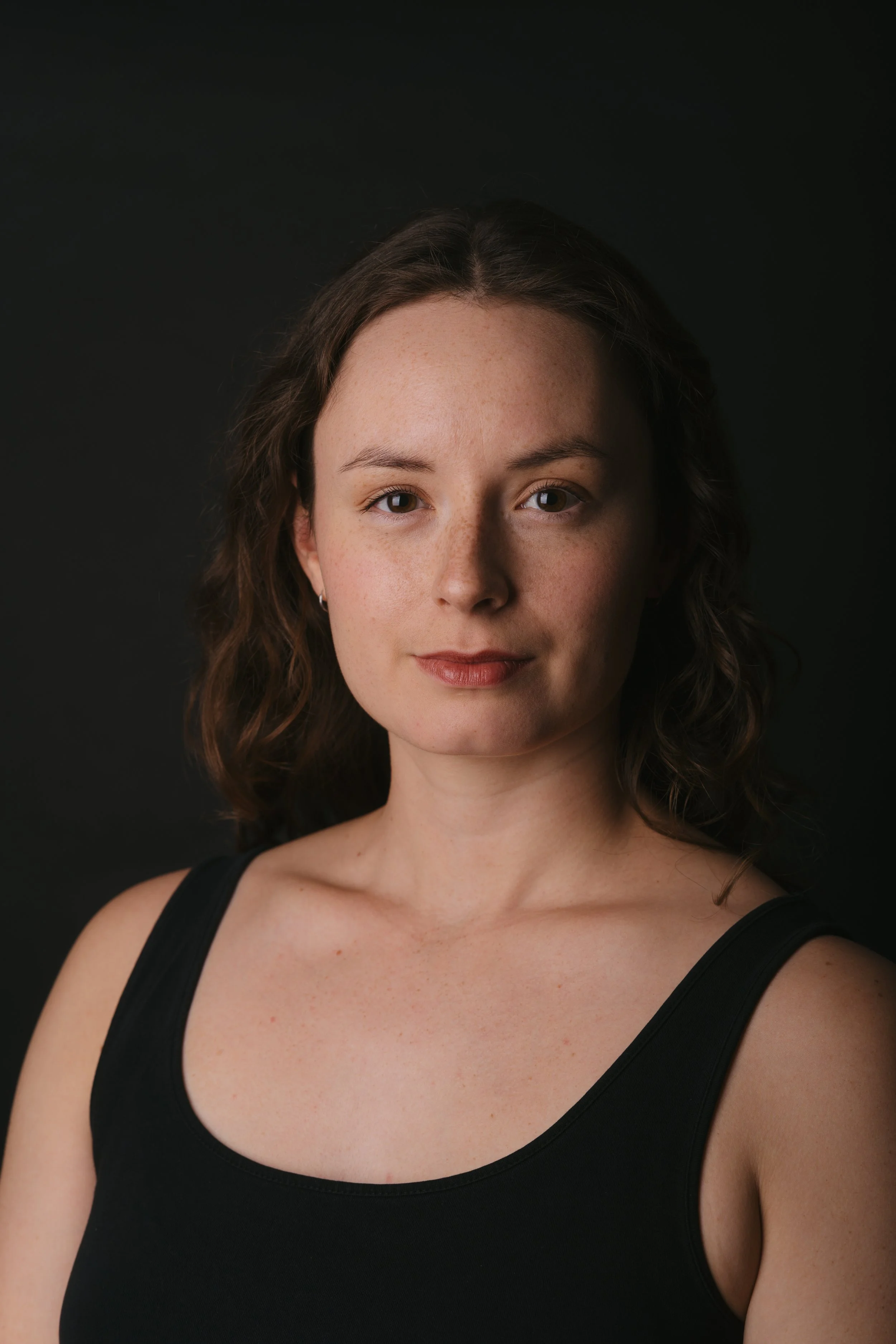
An Artist-led Gathering of Sharing, Workshops & Teachings
yuse’lu skweyul mukw’ ‘uw’ sq’uq’ipulup
Friday
September 12
2025
Saturday
September 13
2025
Download the program
Learn more about

Artistic Sharing
Evocative and heartwarming performances and workshops in the Chief Dan George Theatre, Roger Bishop Theatre, and Barbara McIntyre Studio
Chief Dan George
Workshops
Participate in an array of engaging workshops and panel discussions in the Barbara McIntyre Studio, Roger Bishop Theatre, and Chief Dan George Theatre
This year’s Indigenous Theatre Festival will feature a series of exciting workshops led by incredible artists and facilitators:
These workshops will offer creative and meaningful ways to engage with Indigenous languages, movements, stories, and performances as part of the festival experience.

Indigenous Theatre Festival is FREE to all
Performances
Opening Performance
A poetic journey into language: exploring the mechanisms for passing on cultural knowledge and searching for a way to open up our brains, hearts and minds for the festival.
In weaving three biographies in which language, heritage, legacy, raising children and meeting with grandparents, we looked for what connects us as humans. Central to this poem is the intergenerational courage of our Elders.
A celebration of a gathering, opening is also an encouragement.
with Tara Morris, Kirsten Sadeghi-Yekta & Hazel Fairbairn
Sept. 12, 19:15 - 19:40 | @ Chief Dan George
Utszan
Performed by Yvonne Wallace
Sept. 12, 20:00 - 21:15 | @ Roger Bishop Theatre
Yvonne Wallace (Ucwalmicw) is from the Lil’wat Nation. She graduated the Bachelor of Liberal Arts degree program at Capilano University and is currently working on her Master’s in Education Leadership at UBC. Her enthusiasm for theatre began while she worked at The Centre for Indigenous Theatre. Later, she graduated with honours from Humber College Theatre Acting program. She has written four plays: “Smothered Sweetly,” “The Last Dance,” “I Will Remember My Language” and “ustzan (to make things better),” a play dealing with language reclamation and her first language fluency progression.
Utszan premiered in Whistler, in 2019, Yvonne’s traditional Territory; and has toured to Dawson City, Whitehorse. She is looking forward to honouring her bookings that were scheduled as playwright and performer as soon as our current situation becomes safe. Yvonne can be found in Lil’wat working on her fifth play, “ReZonance.”
Scenes from the Nanaimo Indian Hospital
by Laura Cranmer
Sept. 13, 14:00 - 15:30 | @ Chief Dan George
The play by Laura Cranmer, Scenes from the Nanaimo Indian Hospital, will be performed by actors who are also language learners of each of the main Indigenous language families of Vancouver Island, Hul’q’umin’um’, Nuu-Chah-Nulth, and Kwak’wala. The multilingual script is based on Laura’s three-year stay at the Nanaimo Indian Hospital as a young child. While federal colonial laws greatly constrained Indigenous bodies and lives by corralling whole populations into federal institutions, such as residential schools and Indian hospitals, these spaces became meeting places for the great diversity of unique languages specific to their traditional territories.
In this play, the Indian hospital is now re-imagined to be the confluence of the island’s great linguistic diversity embodied by three young girls—Dorothy Myth representing Kwak’wala, Esther Williams representing Hul’q’umin’um, and Mary Robins representing Nuu-Chah-Nulth—whose growing friendship in Ward B consists of delight in language comparisons while sinister undercurrents are revealed in dialogue and action between the medical staff.
This play script is the foundation of a Social Sciences and Humanities Research Council Insight Development Grant (co-applicants Drs. Amanda Wager and Laura Cranmer) to support the translation of the Hul’q’umin’um’, Nuu-Chah-Nulth, and Kwak’wala Languages by fluent language experts from each language family, as well as to support the hiring of language learners to be coached in the pronunciation and teachings of their languages.
*For those who share similar historical experiences in the Nanaimo Indian Hospital (or other institutions), the content may have a triggering effect. For counseling support please call the Indian Residential School Survivors (IRSS) 24/7 Crisis Support Line at 1-800-721-0066 or Kuu-us Crisis Line at 1-800 588-8717, also available 24/7. Lastly, counselling and emotional support will be available in Room 141 for audience members who may need it during or after the performance. A post-show talking circle will also be offered.
Traditional Hoop Dance
Performed by Jay Genaille
Sept. 13, 16:00 - 16:30 | @ Outside the Phoenix Building
Jay Genaille paints a unique story through the art of this Traditional Hoop Dance presentation. Jay will engage with the audience by offering an introduction and a short bio, speaking about how he has revitalized his language through dance. Then, he will share some of the teachings around the hoop dance and provide a better understanding by explaining the meaning behind each formation, showcasing a 15 minute performance in honour of our animal relatives of the Land, Elders, Ancestors, community, Missing and Murdered Indigenous Men and Women and the Children who never made it home. Finally, he will close the show with motivational, inspirational, and encouraging words, leaving time for Q&A.
syuth ’utl’ tth’asiyetun | The Story of tth’asiyetun
By the Hul’q’umi’num’ Language & Culture Society
Performed by the Hul’q’umi’num’ Language & Culture Society
Sept. 13, 16:00 - 16:45 | @ Chief Dan George Theatre
Music and storytelling are at the heart of Coast Salish cultural traditions. This moving performance shares original songs from an opera about the life of tth’asiyetun, the last great Coast Salish hereditary chief, who united his people to battle the Yuqwulhte’x invaders at hwtl’upnets (Maple Bay) in the mid-19th century.
Blending song, narrative, and performance, the piece honours ancestral memory and celebrates the strength of community and language. Audiences are invited to follow along with a song guide and experience the story as it is carried forward by Elders, singers, and language keepers.
Slip Away
Performed by Samantha Sutherland
Sept. 13, 17:30 - 17:45 | @ Chief Dan George
Slip Away, a solo created and performed by Samantha Sutherland explores themes of loss and hope relating to the endangered state of the Ktunaxa Language. What happens when individuals are motivated by fear? What work needs to happen to develop a sense of hope for our future? This solo shares accounts of the current efforts toward preservation of the endangered language, and showcases dreams of how it may continue to be enlivened in the future.
Git Hayetsk Dancers
Performed by Git Hayetsk Dancers
Sept. 13, 17:45 - 18:30 | @ Chief Dan George
The Git Hayetsk Dancers are an internationally renowned dance group led in partnership by artist and carver Mike Dangeli (Nisga’a, Tsimshian, Tlingit, and Tsetsaut Nations) and Dr. Mique’l Dangeli (Tsimshian and Tlingit Nations), Assistant Professor of Indigenous Arts in the Department of Art History and Visual Studies at the University of Victoria.
Git Hayetsk means “people of the copper shield” in Sm’algya̱ x, the language spoken by the Nisga’a, Tsimshian, and Gitxsan Nations. The copper shield is the highest form of ceremonial wealth shared among their people as well as other First Nations along the Northwest Coast. Their dancers are bonded by their connections to the Sm’algya̱ x speaking peoples with distinction in their family ties to the many other Nations in Northern British Columbia, the Yukon, and Southeast Alaska. Since 1999, they have shared their songs and dances at ceremonial and public events in urban and rural communities through Canada, the US, and abroad including Austria, Malaysia, Germany, and Japan.
The Git Hayetsk Dancers challenge themselves to learn and practice the artistry of dance, song composition, choreography, and regalia-making to the standards of wealth, power, and prestige embodied by the copper shield. With deep love and respect for their communities, they draw their strengths together to give life to the songs and dances of their ancestors as well as bring to life new ones that reflect their experiences as First Nations people today.











